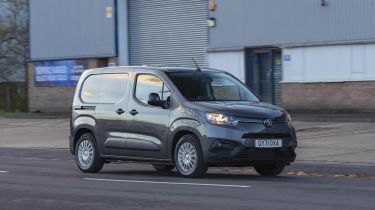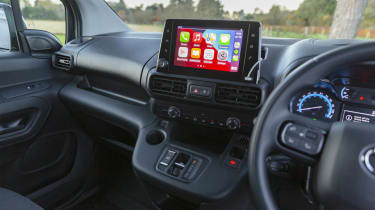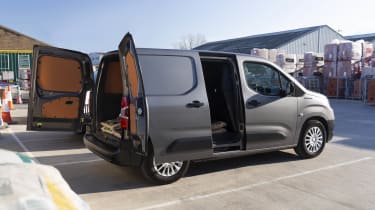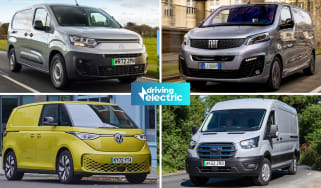Toyota Proace City Electric review
Toyota’s addition to the small electric van class is a compelling all-round package for businesses wanting a zero-emissions fleet

Pros
- 10-year warranty
- Silent electric powertrain
- Generous standard equipment
Cons
- More expensive than equivalent diesel
- Relatively limited range
- No crew van option
| Van type | Range | Wallbox charge time | Rapid charge time |
|---|---|---|---|
| Electric | 168 miles | 7hrs 30mins (0-100%, 7.4kW) | 30mins (10-80%, 100kW) |
Toyota’s first pure-electric car, the bZ4X, hits UK roads in 2022, but the electrification of the Japanese brand’s commercial line-up has already begun. Earlier this year, we drove the mid-size Proace Electric panel van, and now the smaller Proace City Electric has arrived. It's a rival for the Nissan Townstar, Mercedes eCitan and Renault Kangoo E-TECH, which all go on sale in 2022 as well.
Under the metal of the Proace City Electric sit the same underpinnings as the Citroen e-Berlingo, Peugeot e-Partner and Vauxhall Combo-e Cargo, which we’ve already taken for a spin. It uses the same electric motor to power the front wheels, fed by a 50kWh battery for a 168-mile range. And like its close relations, the Proace City Electric is offered in two lengths – L1 and L2 – with the former offering up to 3.3 cubic metres of cargo space.
Aside from the graphics on the central touchscreen, the Toyota’s conventional three-seater cab is also largely identical to the one found in the e-Berlingo, as opposed to the small steering wheel and high-set dials that make up the e-Partner’s i-Cockpit system.
Thanks to its 100kW rapid-charging capability, the Proace City Electric can be topped up from 10-80% in as little as half an hour – faster than either the eCitan or Townstar can manage. Topping up from a 7kW home wallbox takes around seven-and-a-half hours, but Toyota also offers the option to upgrade the AC charging speed to 11kW. Use a wallbox or public charging point capable of that speed, and fully recharging the 50kWh battery will instead take four-and-a-half hours.
As you'd expect, the Toyota is relaxing to drive thanks to silent running. It defaults to Normal driving mode when you start it, which means 108bhp on tap – more than enough for everyday driving. There's just the right amount of throttle response, while selecting 'B' mode increases the strength of the regenerative braking system. It's not strong enough for single-pedal driving, but useful nonetheless.
If you need to stretch out the van’s charge, you can select Eco mode, which adds around nine miles or so to range. However, doing so limits power to 81bhp and throttle response becomes numb, so you end up trying to accelerate harder to compensate. The climate control is also switched off in Eco to save energy, so this is best avoided in hotter or colder weather.
Power mode, on the other hand, is meant for when you have heavier loads on board. Selecting it unleashes the full 134bhp the electric motor has to offer, which can actually feel a little unruly; it's a bit too much power for such a small van. Plus, the Proace City Electric’s range takes a hit in this mode, knocking off around seven miles.
So while there are similarities between the Toyota and its small electric sister vans, the details are where things change. The Proace City Electric is only offered in best-selling Icon trim and in two body lengths, with a pretty generous amount of standard kit. Plus, like all of the brand's passenger cars, the Proace City Electric is covered by Toyota's 10-year warranty, which could bring added peace of mind to business users tempted to make the switch to electric.
Ultimately, the Proace City Electric, along with its sister models from Citroen, Peugeot and Vauxhall, have done well to establish a strong benchmark for their forthcoming rivals. And while there’s little between the Toyota and its Stellantis Group counterparts in terms of price, specification or performance, its 10-year warranty may just swing it for businesses or sole traders eyeing up these four for a place on their fleet.






